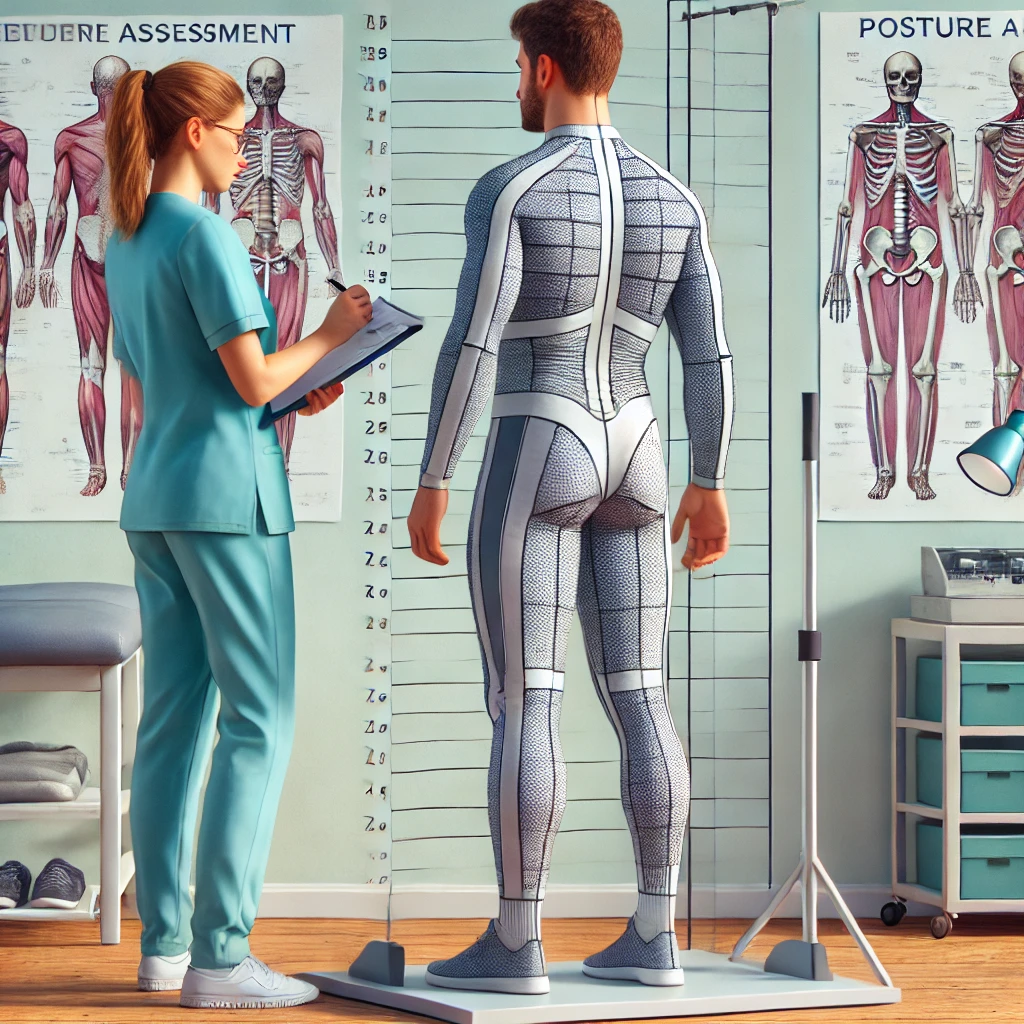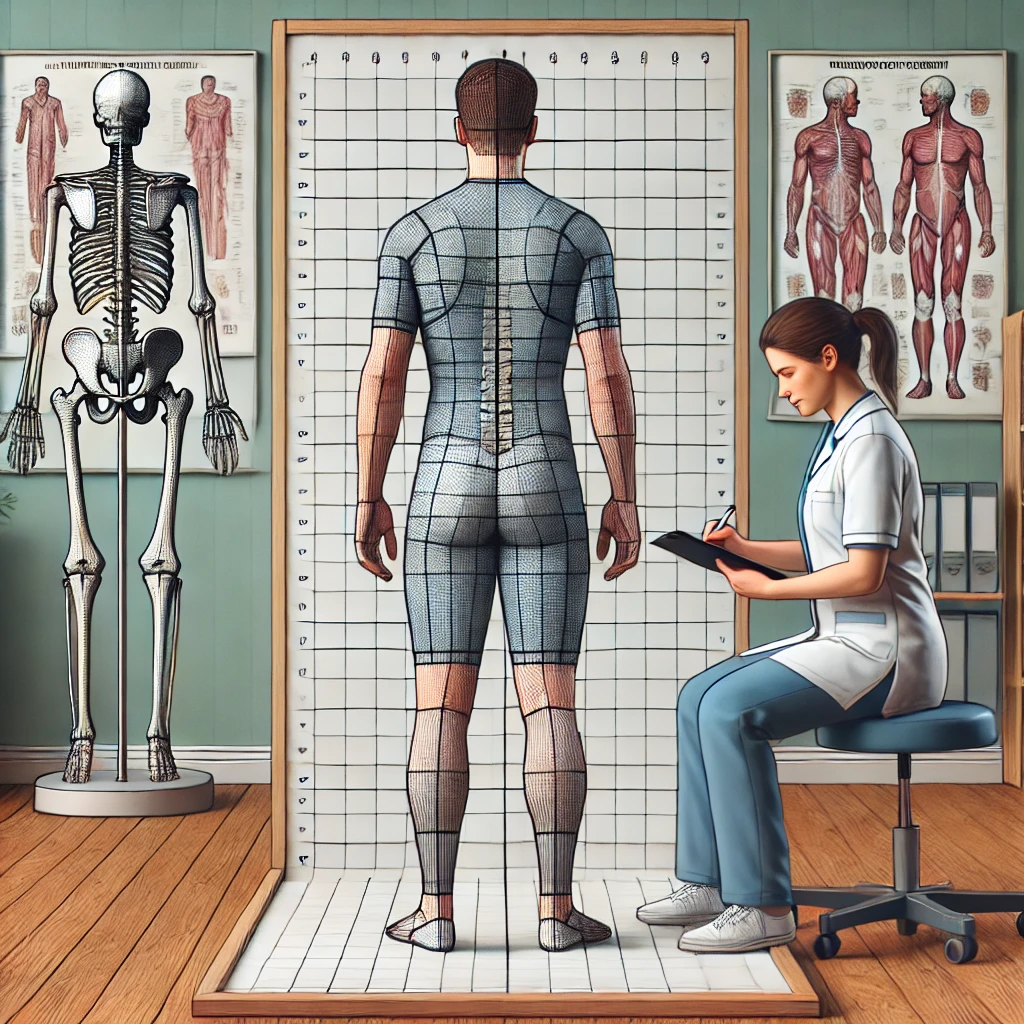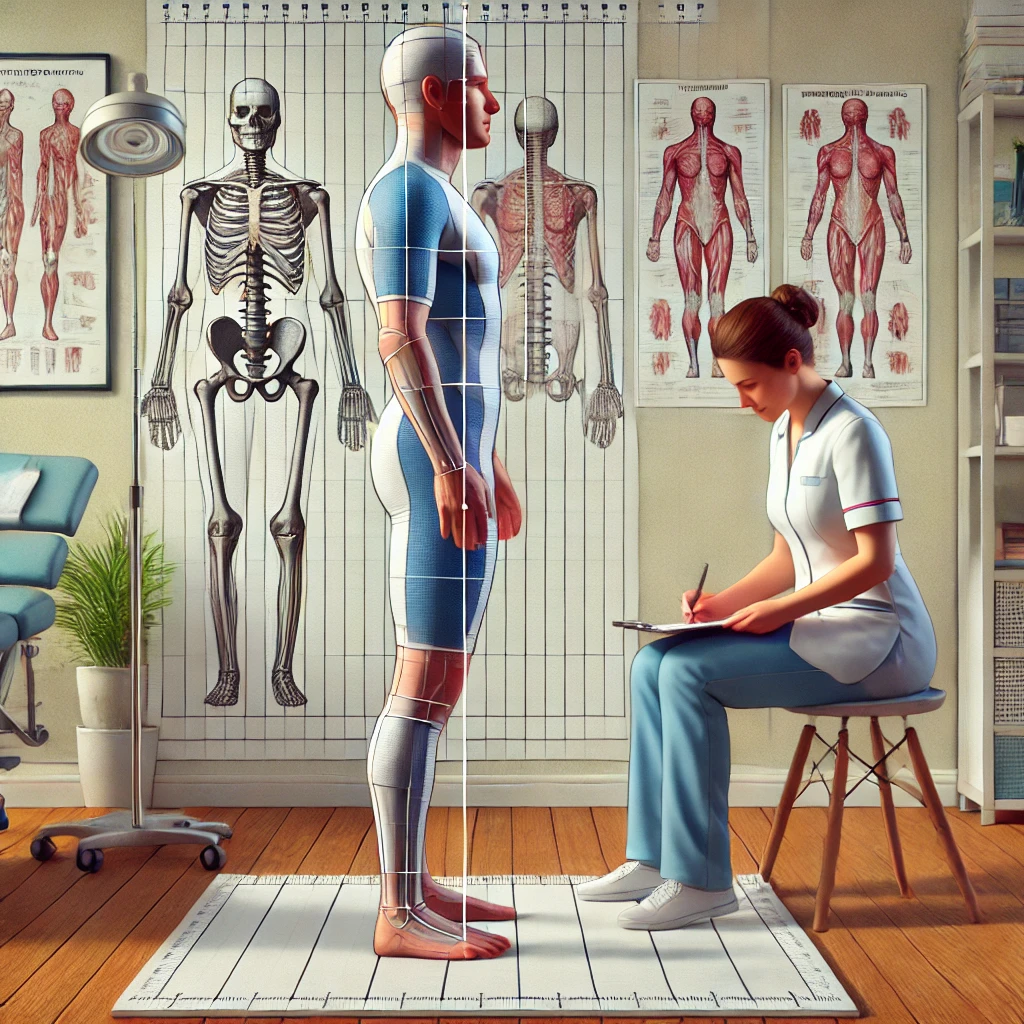Postural assessment evaluates body adjustment and positioning to identify imbalances and deviations from optimal posture. It plays a crucial role in maintaining musculoskeletal health and overall well-being. What is postural assessment? This article explains and helps prevent pain, enhance performance, and improve quality of life by properly adjusting the body’s structures.
What is Postural Assessment – Definition and Importance
Postural assessment is vital for understanding and maintaining optimal body mechanics and overall health. It identifies adjustment issues that can lead to pain, injury, and impaired function.
Postural Assessment
Postural assessment involves a detailed evaluation of an individual’s body adjustment and positioning to identify imbalances and deviations from the optimal posture. Proper postural adjustment is critical in reducing strain on muscles and joints, thereby preventing pain and injury. This process examines how different body parts are adjusted about each other, both in static positions and during movement, to detect deviations from the norm.
Historical Context of Postural Assessment
The origins of postural assessment can be traced back to ancient civilizations where body adjustment and posture were studied for their impact on health. Early practitioners, such as those in ancient Greece and China, recognized the importance of proper adjustment for maintaining health. Over time, the methods have become more sophisticated, incorporating modern technology and biomechanical principles to provide precise evaluations. This evolution reflects a growing understanding of the complex interactions between posture, health, and physical function.
Relevance in Various Fields
Postural assessment is crucial across various fields, including physical therapy, sports science, ergonomics, and chiropractic care. In physical therapy, it helps therapists design effective rehabilitation programs. In sports science, it enhances athletic performance by identifying and correcting imbalances that could lead to injury. Ergonomists use postural assessments to improve workplace design, reducing the risk of musculoskeletal disorders. Chiropractors use these assessments to identify misadjustments and provide targeted adjustments.
Impact on Overall Health and Well-being
Proper posture prevents musculoskeletal problems and enhances physiological functions such as breathing and circulation, improving overall health. Good posture allows optimal organ function, improves digestion, and can even positively affect mental health by reducing stress and increasing confidence. Ensuring proper adjustment helps maintain the body’s balance and symmetry, reducing the risk of falls and enhancing mobility and comfort in daily activities.
Methods and Tools
Postural assessment employs various methods and tools to analyze and correct body adjustment, providing unique insights and data. These tools range from simple visual inspections to sophisticated digital analysis.
Visual Observation Techniques
Adjusting the head, shoulders, spine, hips, knees, and feet. Practitioners use visual observation to assess posture by looking at the body in different static positions, such as standing or sitting. This technique helps identify visible misadjustments and imbalances. For example, they may look at the adjustment of the head, shoulders, spine, hips, knees, and feet from different angles (anterior, lateral, and posterior views). Observations are made to detect asymmetries, deviations, and compensatory patterns that might indicate underlying issues.

Digital Posture Analysis Tools
Modern advancements have introduced software and mobile applications that provide detailed postural assessments. These tools use cameras and sensors to capture and analyze the body’s adjustment, offering visual feedback and precise measurements. Such tools are valuable for providing objective data and tracking postural changes over time. They can create detailed reports highlighting areas of concern and suggest corrective exercises or interventions.
Manual Assessment Methods
These involve hands-on techniques where practitioners assess muscle and joint function through palpation and movement tests. This method helps identify areas of tension, weakness, or restricted movement that contribute to poor posture. Practitioners may use specific tests to evaluate different muscle groups’ flexibility, strength, and coordination, providing a comprehensive understanding of the body’s adjustment and function.
Photography and Video Analysis
Using photographs and videos to capture posture allows for a more comprehensive analysis, especially in dynamic situations. Video analysis can be particularly useful for observing postural adjustment during movement, such as walking or running, providing insights that static assessments may miss. This method allows for a detailed examination of how posture changes during different activities, helping to identify patterns that could lead to injury.
Software for Postural Assessment
Specialized programs analyze and track postural changes over time, providing detailed reports on adjustment and offering recommendations for correction. These programs can be used in clinical settings to monitor a patient’s progress and adjust treatment plans accordingly. They offer features such as 3D modeling and biomechanical analysis, which can provide a deeper understanding of the interactions between different body parts during movement.
Biomechanical Analysis Tools
Devices such as force plates and motion capture systems measure forces and movements to assess posture accurately. These tools are commonly used in sports science and rehabilitation to provide detailed data on how the body moves and maintains adjustment. By analyzing the forces exerted on different parts of the body during various activities, practitioners can identify specific areas of weakness or imbalance that need to be addressed.
Common Postural Issues
Identifying and understanding common postural issues can help effectively manage and correct these problems. These issues often result from prolonged poor posture, muscle imbalances, or structural abnormalities.

Forward Head Posture
This is characterized by the head jutting forward, often resulting from prolonged computer use or poor ergonomic setups. This posture places undue stress on the neck and upper back muscles. It can lead to headaches, neck pain, and reduced mobility in the cervical spine. Corrective measures often involve strengthening the neck and upper back muscles and improving ergonomics.
Rounded Shoulders
Shoulders that slump forward can result from poor sitting habits and weak upper back muscles. This condition can lead to shoulder and upper back pain. It is commonly seen in individuals who spend a lot of time sitting at a desk or using electronic devices. Stretching the chest muscles and strengthening the upper back can help correct this posture.
Pelvic Tilt (Anterior and Posterior)
An anterior pelvic tilt occurs when the pelvis tilts forward, causing excessive curvature of the lower back. A posterior pelvic tilt, on the other hand, involves the pelvis tilting backward, flattening the lumbar spine. Both conditions can cause lower back pain and impact overall posture. Exercises that target the core and hip muscles are often recommended to correct pelvic tilt.
Scoliosis
A lateral curvature of the spine that can significantly affect posture and movement. It may be congenital or develop over time due to factors like poor posture, injuries, or neuromuscular conditions. Scoliosis can lead to pain, reduced mobility, and cosmetic concerns. Treatment often involves bracing, physical therapy, or in severe cases, surgery.
Lordosis
This condition involves excessive inward curvature of the lower back, which can cause discomfort and affect movement. It often results from weak abdominal muscles and tight lower back muscles. Corrective exercises typically focus on strengthening the core muscles and stretching the lower back and hip flexors.
Kyphosis
Kyphosis is excessive outward curvature of the upper back, often associated with a hunched posture. It can be caused by weak back muscles, poor posture habits, or conditions like osteoporosis. Due to the compressed chest cavity, kyphosis can lead to back pain and respiratory issues. Strengthening the upper back muscles and improving overall posture are key components of treatment.
Flat Feet and Their Impact on Posture
Flat arches can affect the adjustment of the entire body, leading to issues like overpronation, which impacts the knees, hips, and lower back. Flat feet can cause pain and affect walking and running efficiency. Orthotics, strengthening exercises, and proper footwear can help manage the impact of flat feet on posture.
Benefits of Postural Assessment
Postural assessment offers numerous benefits, from early detection of issues to enhanced physical performance. It is a proactive approach to maintaining health and preventing injuries.

Early Detection of Musculoskeletal Disorders
Postural assessment allows for the early identification of potential issues before they become severe, enabling timely intervention and treatment. Early detection can prevent the progression of musculoskeletal disorders and reduce the need for more invasive treatments.
Prevention of Chronic Pain
By identifying and correcting postural imbalances, chronic pain conditions that arise from prolonged poor posture can be prevented. This proactive approach helps maintain comfort and functionality in daily activities.
Improved Physical Performance
Optimal posture enhances athletic performance and daily activities by ensuring muscles and joints function efficiently and without unnecessary strain. Proper adjustment allows for better balance, coordination, and power output in sports and exercise.
Enhanced Aesthetics and Confidence
Good posture improves appearance, which can boost self-esteem and confidence. It also contributes to a more professional and competent image. Standing tall with proper adjustment can make individuals look more poised and assertive.
Better Breathing and Circulation
Proper adjustment allows the lungs to expand fully and the blood to circulate efficiently, promoting better respiratory and cardiovascular health. This can enhance overall energy levels and reduce fatigue.
Postural Correction Techniques
There are several effective techniques to correct postural imbalances and promote better adjustment. These techniques range from simple exercises to advanced therapeutic interventions.
Exercise and Stretching Programs
Targeted exercises and stretches strengthen weak muscles and lengthen tight ones, helping to correct postural imbalances. For example, strengthening the upper back and stretching the chest muscles can help correct rounded shoulders. Consistent practice of these exercises can lead to lasting improvements in posture.
Ergonomic Adjustments
Modifying workspaces to support better posture is crucial, especially for those who spend long hours sitting. Ergonomic chairs, adjustable desks, and proper monitor placement can all contribute to maintaining good posture. These adjustments help reduce strain on the body and promote a more natural adjustment during work activities.
Manual Therapies
Chiropractic adjustments, massage therapy, and other hands-on treatments can address misadjustments and muscle tension, promoting better posture. These therapies can provide immediate relief from discomfort and facilitate long-term improvements in adjustment.
Posture Training Devices
Tools such as posture braces or wearable sensors can help individuals maintain correct adjustment by providing physical support or feedback when they slouch. These devices can be particularly useful for individuals who have difficulty maintaining proper posture on their own.
Education and Awareness
Teaching individuals about the importance of good posture and how to maintain it through daily activities is essential for long-term postural health. This education can be delivered through workshops, personal training, or online resources. Raising awareness about posture helps individuals make conscious efforts to improve their adjustment throughout the day.
Regular Monitoring and Reassessment
Ongoing evaluations help track progress and make necessary adjustments to postural correction plans. Regular reassessment ensures that improvements are maintained and any new issues are addressed promptly. Continuous monitoring allows for the early detection of any regression and the implementation of corrective measures.
By understanding the definition, methods, common issues, benefits, and correction techniques of postural assessment, individuals and professionals can work together to promote optimal posture and overall health. This comprehensive approach ensures that the body remains well-adjusted, functional, and free from pain, enhancing quality of life and performance in all activities.

